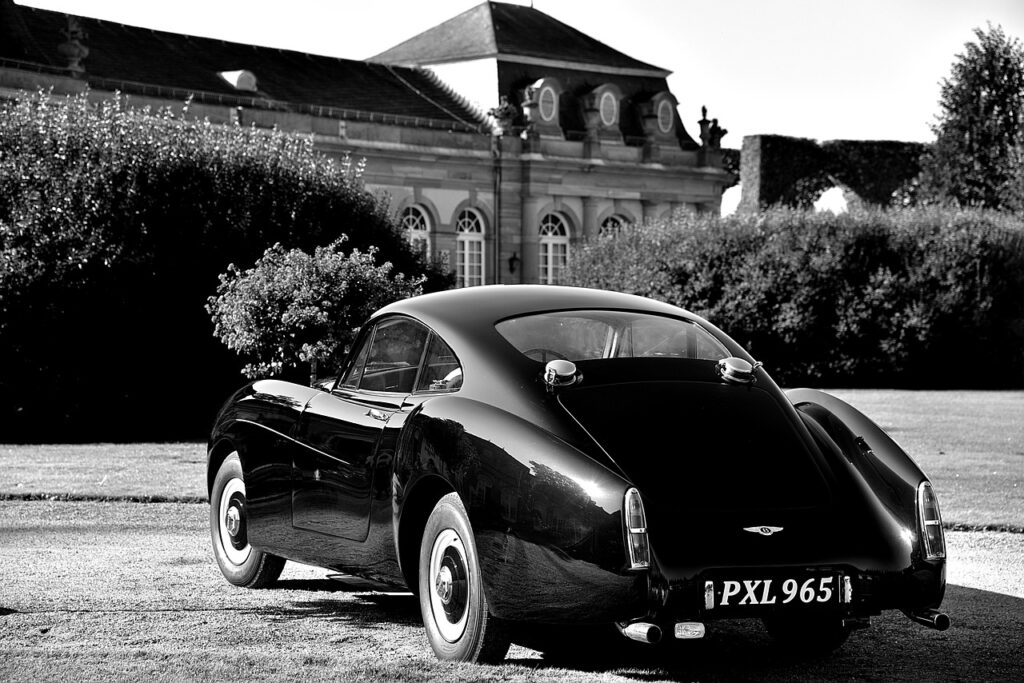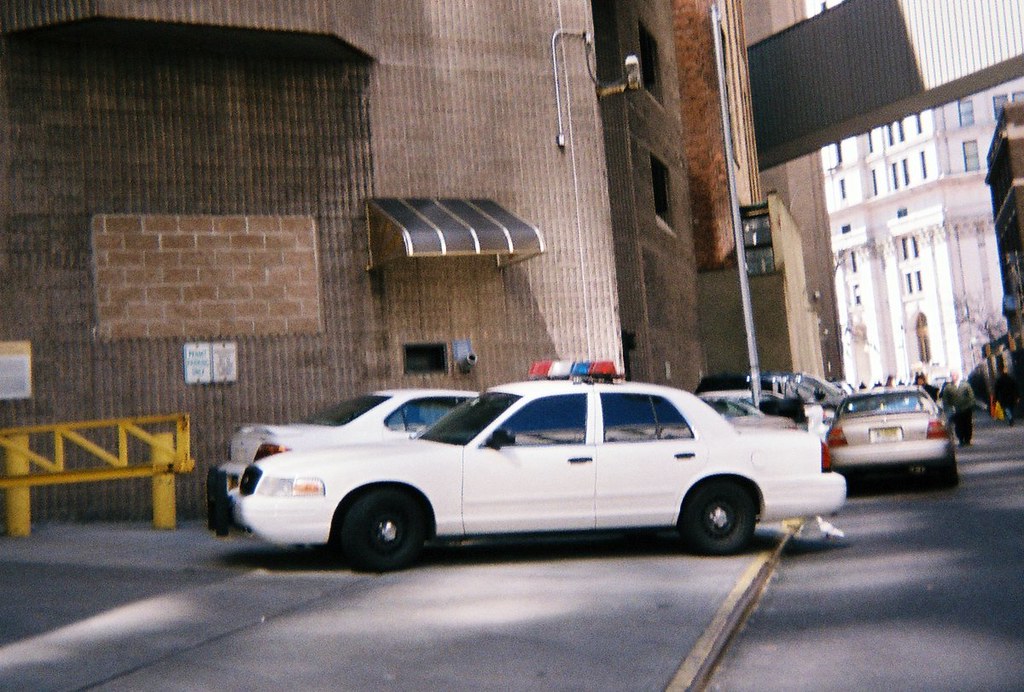
When you see a police car on the road, it might appear to be a slightly altered version of a standard sedan or SUV. You might notice the distinctive lights or the bold livery, but beneath that familiar exterior lies a machine meticulously engineered for a life far more demanding than your typical daily commute. These aren’t just vehicles; they are specialized tools, crafted with precision and purpose to meet the rigorous challenges of law enforcement.
Indeed, the differences between a police car and what’s under your hood are profound, rooted in the unique operational environment police vehicles inhabit. From enduring extended periods of idling while powering complex electronics to engaging in high-speed pursuits and navigating varied terrains, police cars face stresses that civilian vehicles simply aren’t built to handle. This demanding lifestyle necessitates a complete re-evaluation of nearly every component.
Today, we’re taking a deep dive into the engineering marvels that make these vehicles so robust and capable. We’ll explore the critical systems that underpin a police vehicle’s unique capabilities, from raw power and robust durability to the specialized components that ensure performance and safety in the line of duty. Get ready to uncover the fascinating science behind these extraordinary machines.

1. **Powerful and Performance-Tuned Engines**
At the heart of every police vehicle is an engine built not just for speed, but for relentless performance under extreme conditions. Police cars must accelerate quickly, maintain high speeds during pursuits, and have the torque to transport heavy equipment. This contrasts sharply with the balanced performance priorities of most civilian vehicles, which rarely face such continuous, high-demand scenarios.
Modern police interceptors often come equipped with high-output engines, typically a V8 or a turbocharged V6, tuned specifically for law enforcement duties. For instance, Ford’s current Police Interceptor Utility, based on the Explorer, offers a 3.0-liter, 400-horsepower EcoBoost V6 engine, while the Chevrolet Tahoe Police Pursuit Vehicle (PPV) comes with a 5.3-liter V8 producing 355 horsepower. These figures represent a significant boost compared to their civilian counterparts.
These engines are not simply more powerful; they are engineered for durability and reliability under stress. They feature modifications like high-flow cylinder heads for greater airflow and combustion efficiency, along with free-flowing exhaust manifolds and upgraded exhaust systems. These enhancements ensure maximum power delivery and heat management during sustained high-RPM operation.
Furthermore, performance camshafts with increased lift and duration, coupled with cold air intakes, are often integrated to optimize power output. While civilian engines prioritize fuel economy and smoother operation, police engines are designed to endure aggressive driving, extended high-performance demands, and the critical need for immediate power without premature failure.
Read more about: Navigating the Depreciation Minefield: The Fastest Depreciating Cars of 2025 and What It Means for Your Wallet
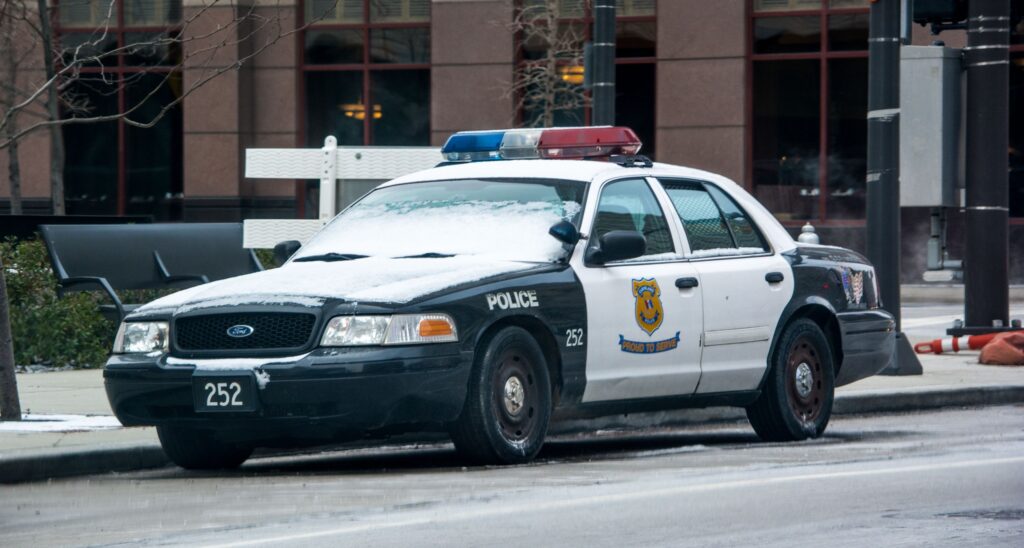
2. **Heavy-Duty Cooling Systems**
A police car’s life involves long periods of idling, often with its engine running to power various accessories. These include the vehicle’s computers, radio communication systems, sirens, and lights, all of which generate significant heat. Without an advanced cooling system, overheating would quickly become a critical issue, compromising reliability and officer safety.
To combat this, police vehicles are fitted with heavy-duty cooling systems. These typically include a higher-capacity radiator, designed to dissipate more heat than a standard unit, and a larger, more powerful cooling fan. These components work in tandem to maintain optimal engine temperature even during prolonged stationary periods or in intense pursuit situations.
Beyond the primary engine cooling, police cars often incorporate additional coolers for the transmission, oil, and power steering fluid. This comprehensive approach ensures that all critical drivetrain components remain within safe operating temperatures, preventing premature wear and maintaining performance stability during high-stress operations like high-speed chases or heavy braking.
This meticulous design for heat management is a hallmark of police vehicle engineering. It reflects the understanding that reliability in the field is paramount, and a vehicle that overheats, whether idling for hours on speed watch patrol or during a demanding pursuit, is a liability. These systems are truly built to endure the heat of the moment.
Read more about: Dominating the Road: The 2025 Heavy-Duty Trucks Commercial Drivers Can’t Afford to Miss
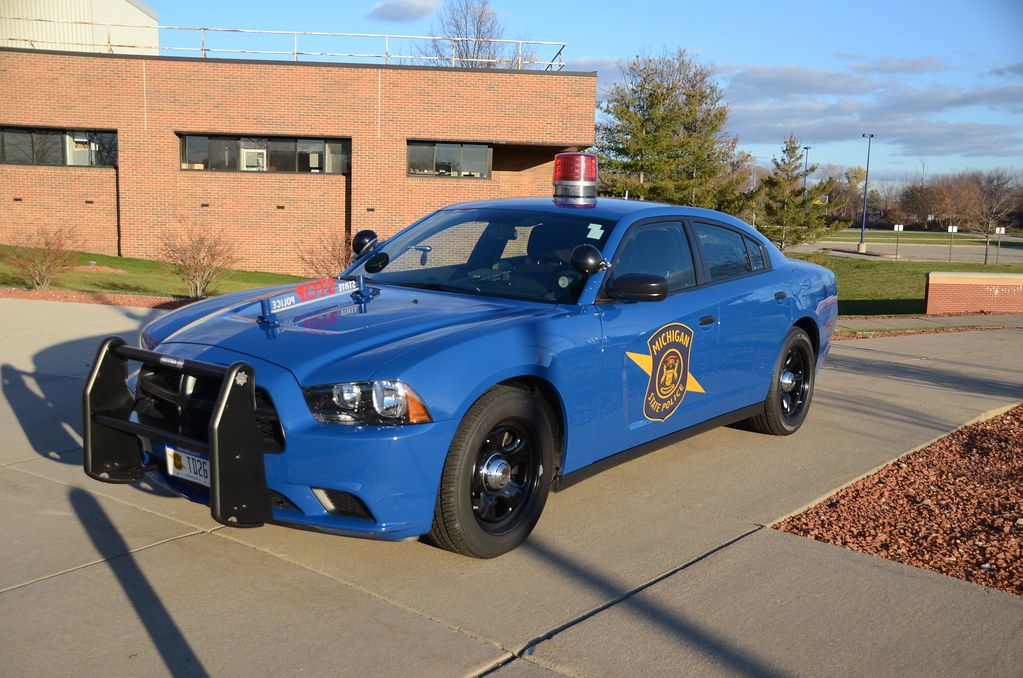
3. **High-Output Electrical Systems**
The sheer volume of electronic equipment in a modern police car demands an electrical system far more robust than that found in a civilian vehicle. Beyond standard car electronics, police vehicles must power an array of sophisticated accessories: computers, GPS and navigation systems, radios, dash cams, radar guns, sirens, and emergency lighting, all simultaneously and often for extended periods.
To generate a sufficient amount of electricity for all these power draws, police cars come equipped with a high-output alternator. While a typical civilian car might feature a 140-Amp alternator, a police car’s alternator can be 300 Amps or even more, providing the continuous power supply necessary to keep all systems operational without draining the battery.
Complementing the high-output alternator is a heavy-duty battery, capable of withstanding the deep cycling and constant demand placed upon it. This robust battery ensures that even when the engine is off or idling, there’s enough reserve power for critical systems, allowing officers to maintain communication and data access without interruption.
This beefed-up electrical architecture ensures that the vehicle remains a fully functional mobile command center throughout an officer’s entire shift. It’s designed to keep all the essential tools powered, from communication systems to onboard diagnostics, regardless of the operational demands, distinguishing it significantly from the electrical capacity of a standard car.
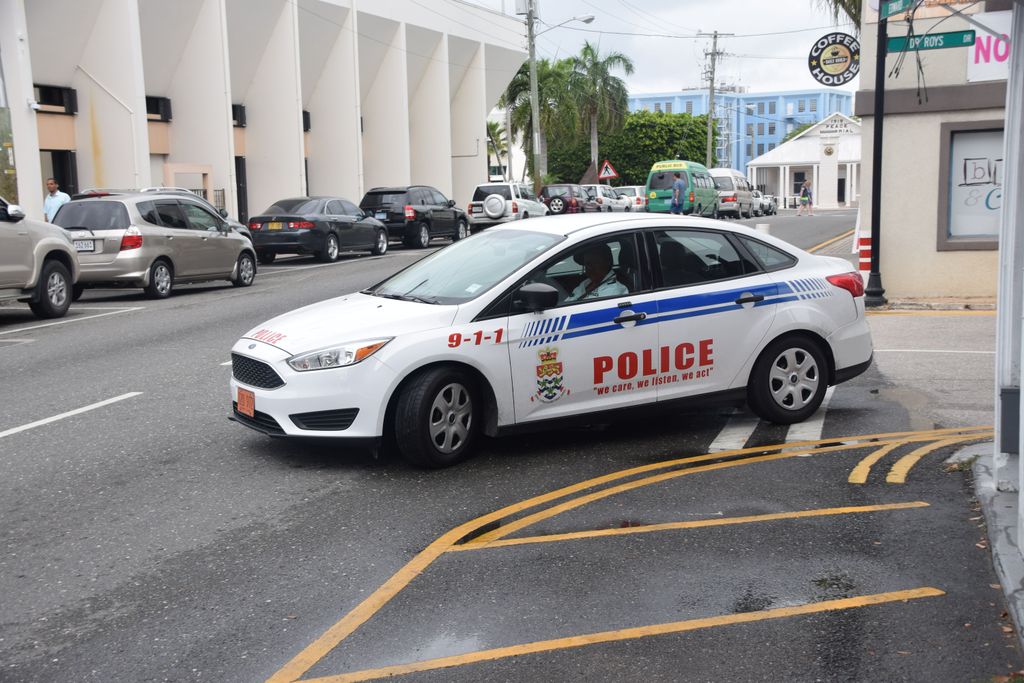
4. **Reinforced Suspension Systems**
Police work is rarely confined to smooth, well-maintained roads. Vehicles must be capable of handling bumpy terrain, sudden maneuvers, and even minor impacts without compromising control or structural integrity. This necessitates a suspension system built to withstand far more abuse than a standard car’s setup, which typically prioritizes ride comfort.
To achieve this level of durability and performance, police cars incorporate heavier springs, designed to support the additional weight of equipment and absorb greater impacts. Stronger shocks are also standard, providing enhanced dampening capabilities that maintain tire contact with the road during aggressive driving and over uneven surfaces.
Thicker stabilizer bars are another crucial upgrade, significantly reducing body roll during high-speed cornering and sudden directional changes. These components work together to ensure the vehicle remains stable and controllable, even when pushed to its limits, offering a stark contrast to the softer, more compliant suspensions of civilian models.
Examples like the Sensen 99213 shocks, crafted from heavy-duty steel and often found on robust police vehicles such as the Crown Victoria Interceptors, highlight this commitment to durability. Such components are engineered to last for many years and endure the constant stresses and demands of daily police duty, providing unparalleled robustness.
Read more about: Gutfeld’s Unfiltered Firestorm: Exposing the Left’s ‘Both Sides’ Fallacy After Charlie Kirk’s Assassination
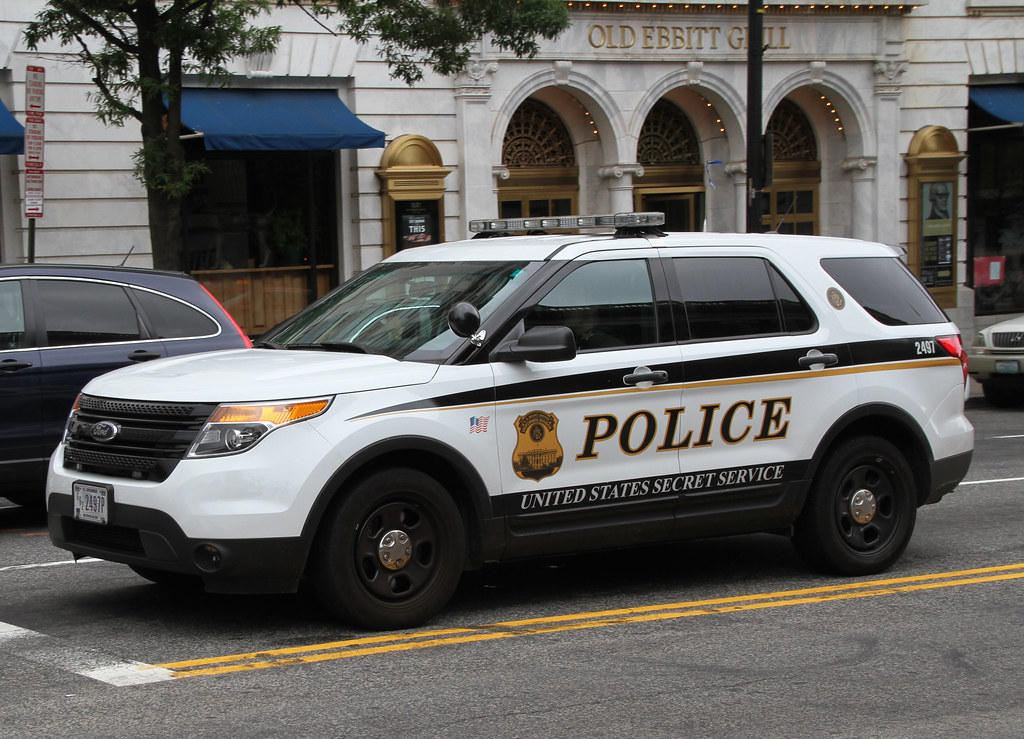
5. **Upgraded Braking Systems**
In a pursuit or emergency response situation, the ability to stop quickly and safely is as critical as the ability to accelerate. Police vehicles frequently need to perform hard, repetitive braking from high speeds, a task that would quickly overwhelm and overheat the braking system of a civilian vehicle. Therefore, their brakes are significantly enhanced.
Police cars feature upgraded braking systems designed for superior stopping power and heat resistance. This includes larger brake rotors, which provide more surface area for heat dissipation, and more robust calipers. A prime example is the Chevrolet Tahoe PPV, which comes equipped with high-performance Brembo front calipers, a brand synonymous with top-tier automotive braking.
These systems also incorporate advanced ABS and traction control systems, meticulously tuned to handle the extreme demands of police driving. This ensures maximum braking effectiveness and control, preventing wheel lock-up and maintaining directional stability even under intense pressure.
The purpose of these comprehensive braking upgrades is twofold: officer safety and operational effectiveness. Reliable, fade-resistant brakes are paramount for controlling a heavy, high-performance vehicle during emergencies, making these systems a cornerstone of police vehicle engineering that far exceeds civilian specifications.
Read more about: Redefining Automotive Excellence: 10 Luxury Cars That Will Raise the Bar in 2025

6. **Specialized Tires and Heavy-Duty Wheels**
The interface between the vehicle and the road—the tires—is absolutely critical for police performance. Police cars require tires that can withstand the rigors of high-speed pursuits, offer exceptional grip and handling, and resist punctures or blowouts far better than standard consumer tires. These are not merely off-the-shelf options.
Bespoke police car tires are specifically engineered for law enforcement duties. A notable example is the Goodyear Eagle Enforcer tire, which boasts a speed rating of V, meaning it’s suitable for speeds up to 149 MPH. This is a clear indicator of their capability to perform reliably at speeds well beyond typical civilian driving limits.
The tread compound of these specialized tires is designed explicitly for pursuits, providing enhanced grip and durability. Features like wide circumferential grooves and large shoulder blocks further contribute to their effectiveness, ensuring superior wet and dry traction, crucial for maintaining control in diverse driving conditions.
These specialized tires are mounted on heavy-duty wheels, which are themselves designed to withstand impacts and the immense stresses encountered during aggressive driving, curb strikes, or rough terrain. This combination of advanced tires and robust wheels forms a critical foundation for the police vehicle’s overall stability, safety, and high-performance capability.
Read more about: Watch Out! 15 Cars That Could Drain Your Wallet with Costly Repairs Down the Line
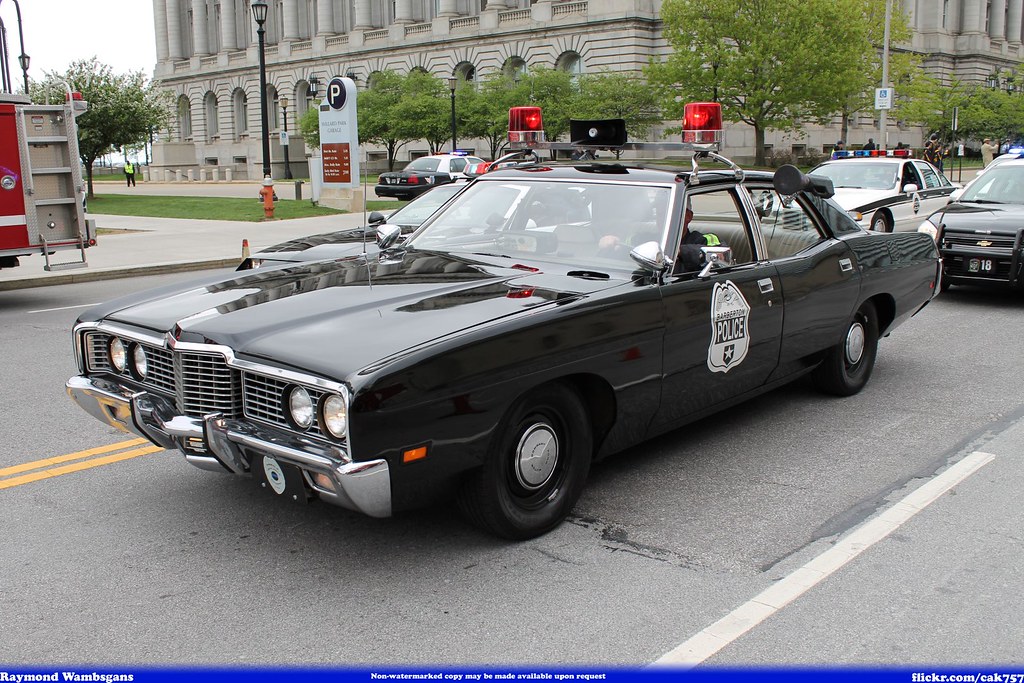
7. **Beefed-Up Drivetrain Components**
Supporting the powerful engines in today’s police cars requires a drivetrain that is equally robust and capable of handling immense stress. Every component responsible for transmitting power from the engine to the wheels must be significantly beefed up to endure the relentless demands of police duty, distinguishing them from standard civilian setups.
Key drivetrain components such as the exhaust system, U-joints, and driveshaft are all upgraded. These modifications ensure that the entire powertrain can reliably transmit the increased horsepower and torque produced by the enhanced engines, preventing premature wear and failure under high-load conditions.
Furthermore, police vehicles often include additional protective measures for critical underbody components. Deflector plates, for instance, are installed to shield the engine from underbody impacts. This feature is crucial for vehicles that might need to traverse uneven terrain or encounter debris on the roadway, ensuring continued operation after minor impacts.
These comprehensive upgrades ensure that the entire power delivery system is as durable and resilient as the engine itself. From the moment power is generated to the point it reaches the road, every component is engineered to withstand the extraordinary demands of police work, providing reliability and performance that far exceed the capabilities of a standard civilian vehicle.
Having explored the raw power, robust durability, and mechanical fortitude that define a police vehicle’s core engineering, our journey now shifts to the equally crucial elements that equip these machines for their demanding operational environment. Beyond the engine and chassis enhancements, police cars are veritable mobile command centers, integrated with specialized interiors, advanced safety features, sophisticated communication systems, and unique technologies designed to support officers and manage challenging situations. These innovations transform a powerful vehicle into a highly functional tool, ensuring efficacy and safety in the line of duty.
Read more about: 14 Legendary ’60s Muscle Cars That Defined an Era—and Still Steal the Show

8. **Specialized Interior and Seating**
The interior of a police vehicle is a masterclass in ergonomic and practical design, tailored specifically for the rigorous demands of law enforcement. Unlike civilian cars that prioritize luxury or family comfort, every aspect inside a police cruiser serves a functional purpose. A prime example of this deliberate design can be seen in the center console, which in many police vehicles, such as the Ford Police Interceptor Utility, features a column-mounted shifter. This strategic relocation frees up crucial space on the center console, allowing for the installation of tactical equipment that an officer needs readily accessible.
This specialized console area is far from a standard dashboard. It’s often fitted with custom solutions, including overhead consoles, L-shape and vertical consoles, and in-dash computer mounts. Companies like Troy Products specialize in crafting these accessories, highlighting how functionality is paramount. The ability to customize this central control hub means that officers have immediate, organized access to their diverse array of tools and electronics, transforming the cabin into an efficient operational workspace.
The seating arrangements within a police car further underscore its unique design philosophy. The front seats, where officers spend countless hours, are engineered for comfort and functionality, featuring additional layers of padding and cushions adapted for the police equipment officers must carry. This specialized padding helps mitigate back and bottom pain during long shifts. Crucially, these front seats also incorporate anti-stab protection in the seatbacks, adding a vital layer of safety for the officers.
In stark contrast, the rear compartment of a police vehicle is designed with an entirely different purpose: securely containing arrested individuals. These rear seats are often flat, hard, and covered in vinyl or plastic, making them easy to clean and less comfortable. The space is typically enclosed and lacks storage areas, preventing detainees from stashing contraband. This deliberate design ensures control and containment, making the ride to the station as straightforward as possible for law enforcement.
Car Model Information: 2022 Hyundai PALISADE Calligraphy
Name: Ford Explorer
Caption: Sixth-generation Ford Explorer
Manufacturer: Ford Motor Company
Production: 1990–present
ModelYears: 1991–present
Class: unbulleted list
Chassis: unbulleted list
Predecessor: Ford Bronco II
Successor: Ford Territory (Australia)
Categories: 2000s cars, 2010s cars, 2020s cars, All-wheel-drive vehicles, All Wikipedia articles in need of updating
Summary: The Ford Explorer is a range of SUVs manufactured by the Ford Motor Company since the 1991 model year. The first five-door SUV produced by Ford, the Explorer, was introduced as a replacement for the three-door Bronco II. As with the Ford Ranger, the model line derives its name from a trim package previously offered on Ford F-Series pickup trucks. As of 2020, the Explorer became the best-selling SUV in the American market.
Currently in its sixth generation, the Explorer has featured a five-door wagon body style since its 1991 introduction. During the first two generations, the model line included a three-door wagon (directly replacing the Bronco II). The Ford Explorer Sport Trac is a crew-cab mid-size pickup derived from the second-generation Explorer. The fifth and sixth generations of the Explorer have been produced as the Ford Police Interceptor Utility (replacing both the Ford Crown Victoria Police Interceptor and the Ford Police Interceptor Sedan).
The Explorer is slotted between the Ford Edge and Ford Expedition within North America’s current Ford SUV range. The model line has undergone rebadging several times, with Mazda, Mercury, and Lincoln each selling derivative variants. Currently, Lincoln markets a luxury version of the Explorer as the Lincoln Aviator.
For the North American market, the first four generations of the Explorer were produced by Ford at its Louisville Assembly Plant (Louisville, Kentucky) and its now-closed St. Louis Assembly Plant (Hazelwood, Missouri). Ford currently assembles the Explorer alongside the Lincoln Aviator and the Police Interceptor Utility at its Chicago Assembly Plant (Chicago, Illinois).
Get more information about: Ford Explorer
Buying a high-performing used car >>>
Brand: Ford Model: Police Interceptor Utility
Price: $34,194 Mileage: 37,781 mi.
Read more about: Reliable Rides for the Long Haul: 10 Top-Performing Vehicles Proven to Exceed 200,000 Miles, According to Consumer Reports
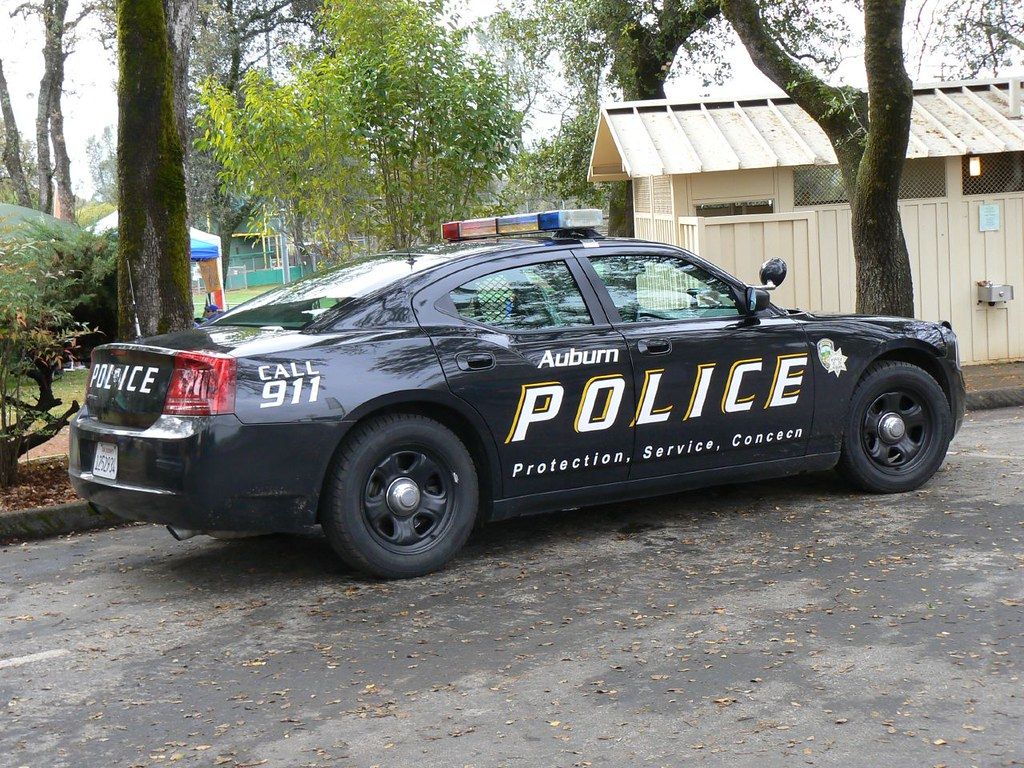
9. **Advanced Communication and Computing Systems**
Modern police work is heavily reliant on real-time information and seamless communication, which is why police vehicles are essentially massive mobile computer centers. Far exceeding the capabilities of standard civilian infotainment systems, these vehicles are equipped with an array of high-tech electronic components, all working in unison to provide officers with critical data and connectivity.
At the heart of this technological ecosystem are sophisticated computer stations integrated directly into the cabin. Officers can log into these advanced systems to access vital information quickly, from license plate details and criminal records to address information and incident reports. These stations are highly sophisticated, connecting much more rapidly and reliably than typical mobile phones or tablets, providing immediate access to law enforcement databases.
Beyond the main computing hub, police cars also feature a comprehensive suite of communication and navigation tools. This includes high-tech GPS and navigation systems for efficient routing and location tracking, along with powerful radios to maintain constant contact with the station and control room. Dash cams provide crucial video evidence, while radar guns assist in speed enforcement, showcasing the breadth of digital tools at an officer’s disposal.
The seamless integration of these massive computer and communication centers ensures that a police vehicle remains a fully functional mobile command post throughout an officer’s shift. This robust technological infrastructure is a testament to the dedication to operational efficiency and officer safety, allowing for swift decision-making and coordinated responses in dynamic situations.
Read more about: Beyond the Hype: Dissecting the Complex Reasons Why Americans Are Buying Fewer Tablets and What This Means for the Future of Digital Devices

10. **Protective Measures and Reinforcements**
The inherent dangers of police work necessitate advanced protective measures built into the very structure of these vehicles, going far beyond standard automotive safety features. These enhancements are designed to safeguard officers and maintain vehicle integrity in potentially hostile environments.
Many police vehicles are equipped with bullet-proof glass, offering a crucial layer of defense against ballistic threats. This specialized glass protects officers from gunfire, a stark reminder of the risks they face. In addition to exterior protection, some vehicles feature bullet-proof separators strategically placed between the backseat and front seat areas, creating a secure barrier between officers and potentially volatile detainees. These separators, which may appear unassuming, are crafted from sturdy materials capable of deflecting bullets.
Beyond ballistic protection, the structural integrity of the vehicle is significantly enhanced. While the front seats offer anti-stab protection in their seatbacks, the overall construction is designed to withstand a range of impacts and stresses. This comprehensive approach to safety ensures that police officers are afforded the maximum possible protection while performing their duties, allowing them to focus on their mission with greater peace of mind.
Read more about: Master the Wild: 14 Essential Survival Gear Items for Any Outdoor Challenge
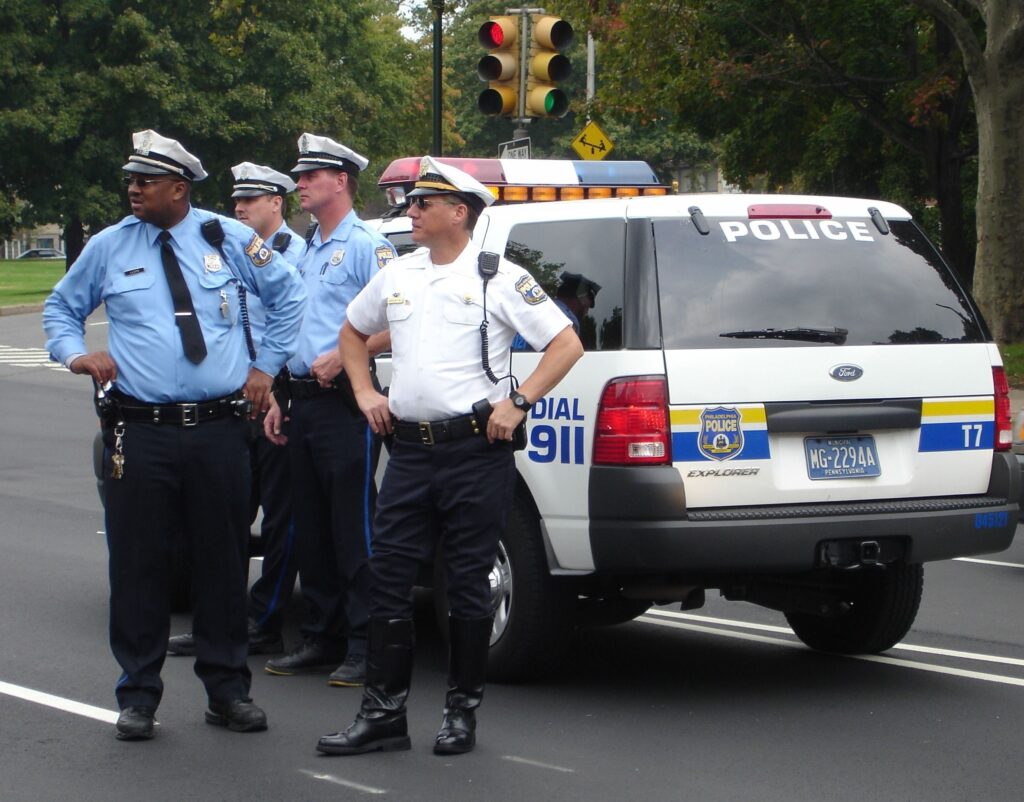
11. **Specialized Warning Systems**
When a police officer needs to command attention, whether to clear a path for an emergency response or to signal a driver to pull over, they rely on specialized warning systems far more potent than typical civilian car horns. These systems are engineered for maximum impact and audibility, ensuring that their presence is undeniable.
The most distinctive of these are the rumbler sirens. Unlike standard sirens, a rumbler siren generates low-frequency sound waves that can be felt as much as heard, designed to penetrate vehicle cabins and cut through distractions like loud music or passenger conversations. These powerful sirens can be heard from at least 200 feet away, and often much farther, ensuring that nearby drivers are aware of the approaching police vehicle and can react appropriately.
Complementing these auditory warnings are advanced emergency lighting systems. While specific details on the lighting technology are less elaborated in the context, it is mentioned that “LED lighting technology that allows for smaller, but brighter, lights to be neatly integrated” into vehicles like the Ford Police Interceptor Utility. This means highly visible, powerful emergency lights work in conjunction with the sirens to provide a clear and unmistakable signal of an active police presence.
Read more about: Beyond Range Anxiety: 12 Critical Electric Vehicle Issues Leaving Owners Stranded and Disappointed
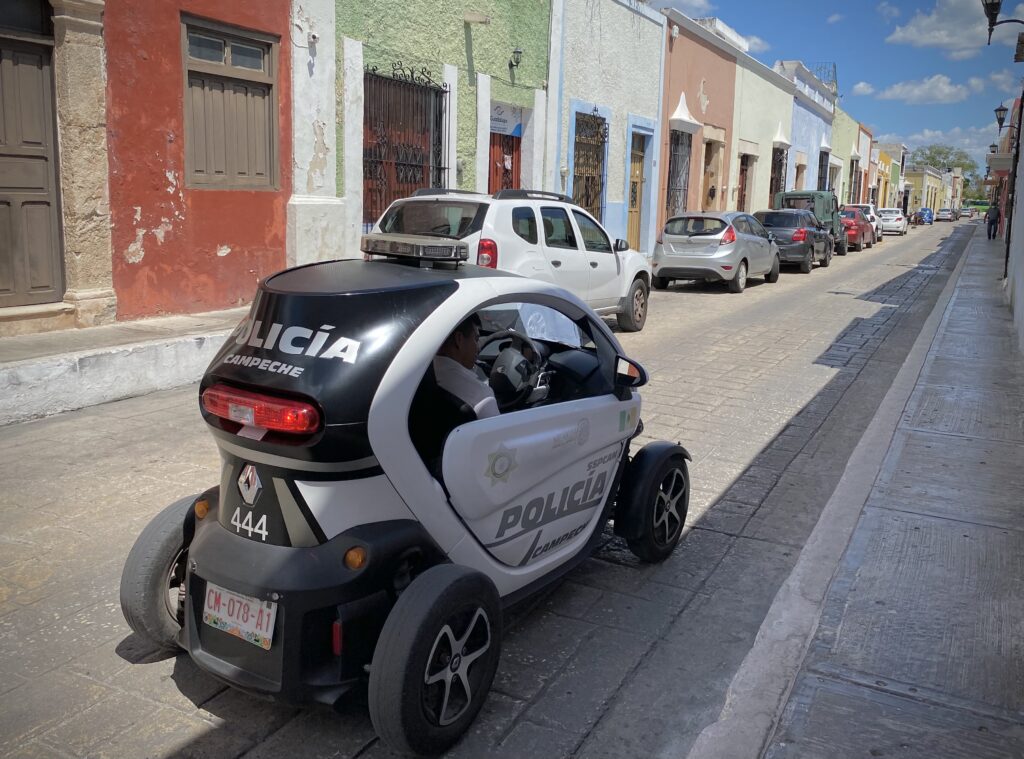
12. **Impact-Resistant Fronts and Body Reinforcements**
The robust nature of police work often requires vehicles to operate in challenging conditions, including scenarios where minor impacts are unavoidable or even strategic. To address this, many police cars are designed with impact-resistant fronts and additional body reinforcements that civilian vehicles simply don’t possess.
A prime example of this is the optional bull bar, sometimes fitted to the front of police cars. These robust external structures are designed to protect the front of the vehicle from serious impacts. This feature is crucial for vehicles that might need to traverse uneven terrain, encounter debris on the roadway, or even strategically engage other vehicles, ensuring the vehicle can continue operating after minor collisions.
Beyond bull bars, some police cars are specifically engineered with fortified hoods and special grilles. This design allows them to withstand and even ‘ram’ their way through certain complicated situations without sustaining significant damage to the front of the vehicle. This capability is a testament to their warrior-like design, although it’s important to note that not all police cars are equipped for such extreme actions.
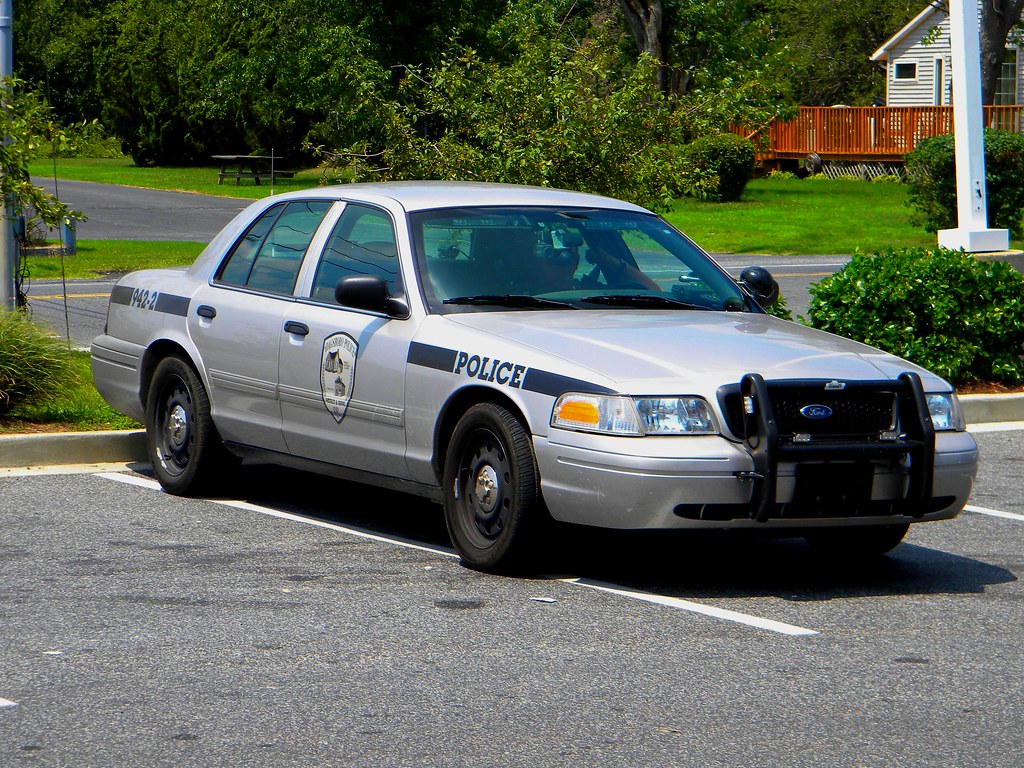
13. **”Run Lock” Feature and Operational Efficiencies**
One of the most ingenious and practical features found in police vehicles, often envied by civilian drivers, is the “run lock” system. This innovation dramatically enhances operational efficiency by allowing officers to maintain critical vehicle functions even when they step out of the car.
The run lock feature enables the battery and essential electrical systems to remain activated and engaged after the police officer removes the key from the ignition and exits the vehicle. Unlike most cars, which are designed to shut down completely once the key is removed, the run lock keeps the engine running (or the electrical system fully powered) and accessories operational. This means radios stay on, computers remain logged in, and emergency lights continue to function without interruption.
This feature saves invaluable time and eliminates the need for an officer to restart the vehicle every time they need to briefly leave it to attend to a person pulled over or respond to a scene. The continuity of power ensures that there’s no lapse in communication or data access, allowing officers to seamlessly transition from patrol to on-foot interaction and back into the vehicle, maximizing their efficiency in dynamic situations.
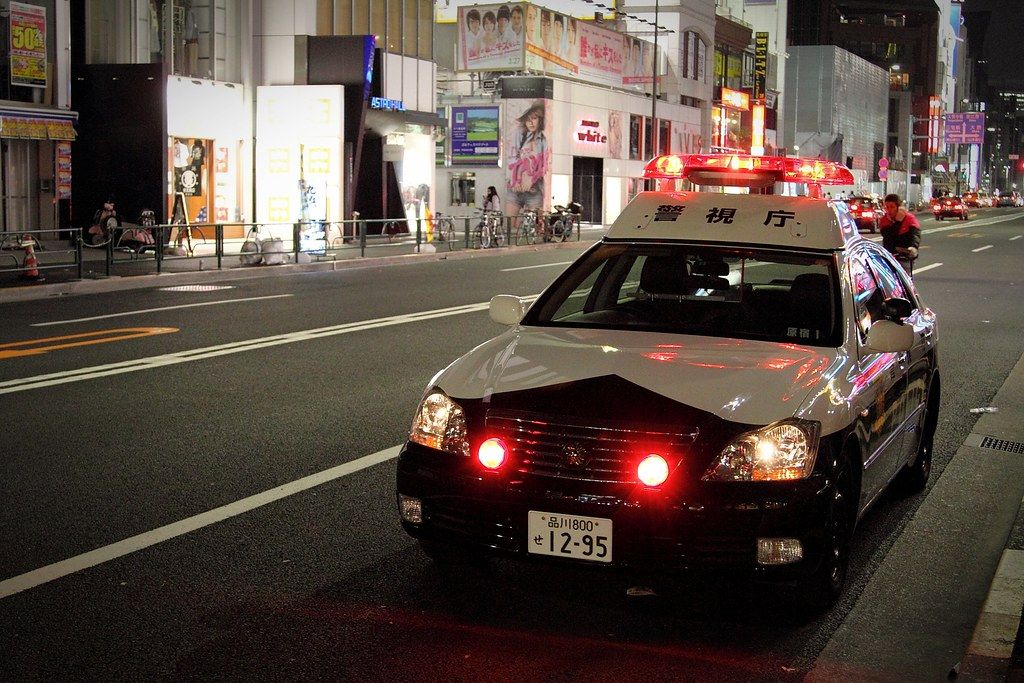
14. **Strategic Storage Solutions**
Police vehicles are not just for transport; they are mobile offices, armories, and command posts, requiring highly organized and secure storage solutions for a vast array of equipment. This differs significantly from civilian vehicles, which typically offer general cargo space without specialized compartments.
A key distinction is the optimization of interior space for law enforcement tools. For instance, in vehicles like the Ford Police Interceptor Utility, which has two rows of seats for up to five passengers compared to the civilian Explorer’s three rows, there is significantly more room in the trunk. This increased cargo capacity is specifically utilized for firearms storage and other essential gear, reflecting the operational priorities of police work.
To maximize this space and ensure security, specialized storage solutions are integrated. Companies like Troy Products offer police command vaults and secure lock boxes custom-made for vehicles like the Ford Police Interceptor Utility. These solutions help officers organize and securely store sensitive equipment, such as firearms, ensuring they are protected and readily accessible when needed.
Furthermore, cargo partitions are often installed to further secure the cargo area. A “3-sided design that guards the driver and passenger-side cargo windows” is one example, which not only secures equipment but also provides an additional layer of safety, preventing loose items from becoming projectiles during aggressive driving. These strategic storage solutions are integral to an officer’s effectiveness, ensuring that all necessary equipment is onboard, organized, and secure for any situation.
Read more about: The Mounting Costs and Psychological Strain: An In-Depth Look at Why Subscription Fatigue Is Gripping Americans
From the powerful roar of a performance-tuned engine to the intricate web of communication systems and the subtle efficiency of a ‘run lock’ feature, it’s clear that a police car is an engineering marvel designed for a singular, vital purpose: to serve and protect. These aren’t just vehicles; they are purpose-built tools, each component meticulously selected and optimized to empower officers in their demanding daily duties. The next time you see a police car, remember the incredible blend of power, protection, and technology beneath its surface, making it truly different from anything under your hood.

